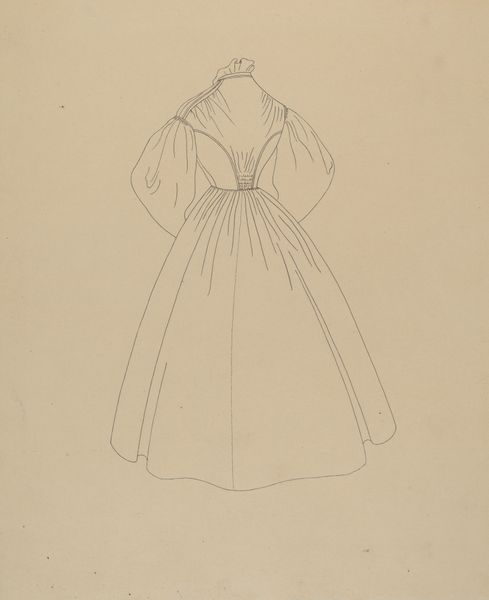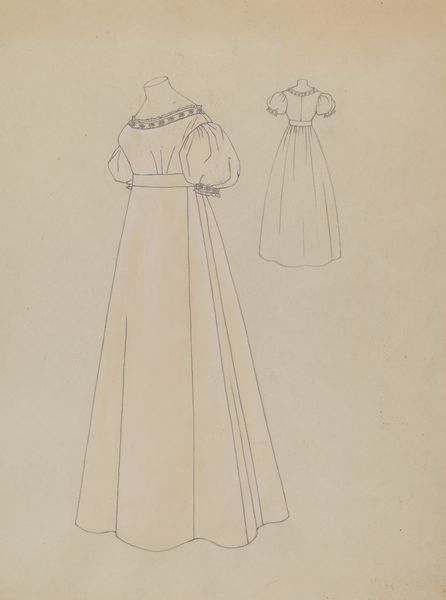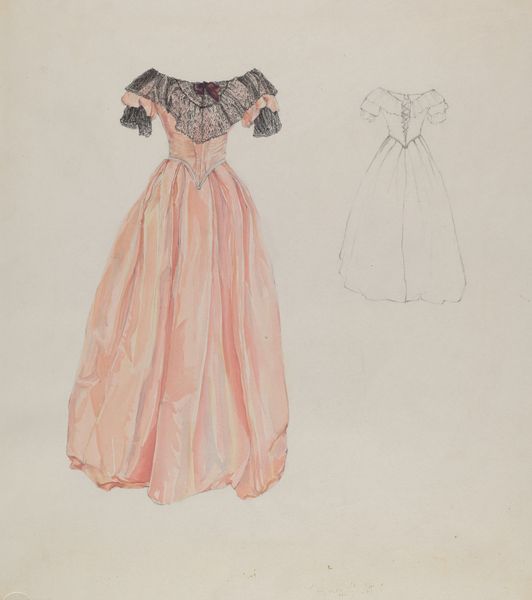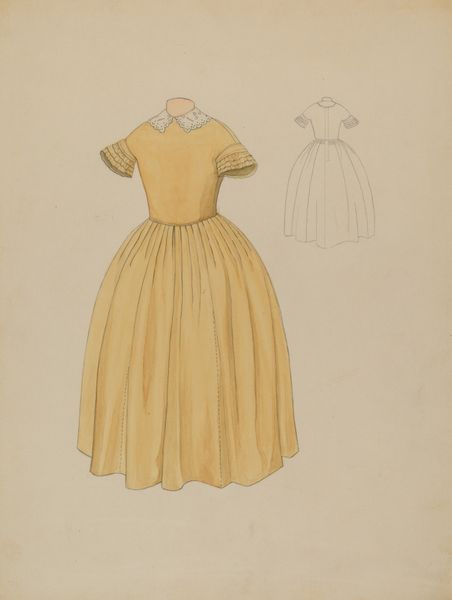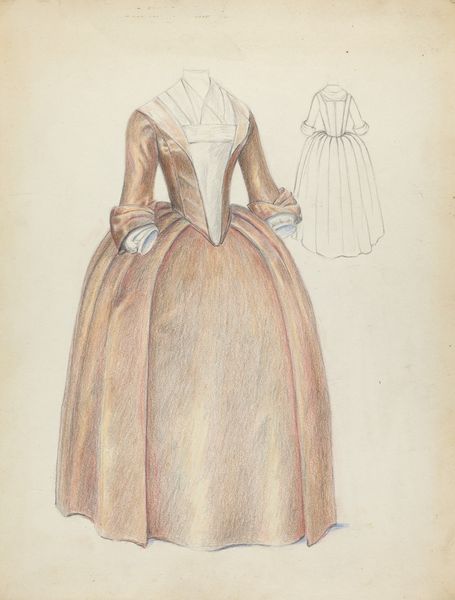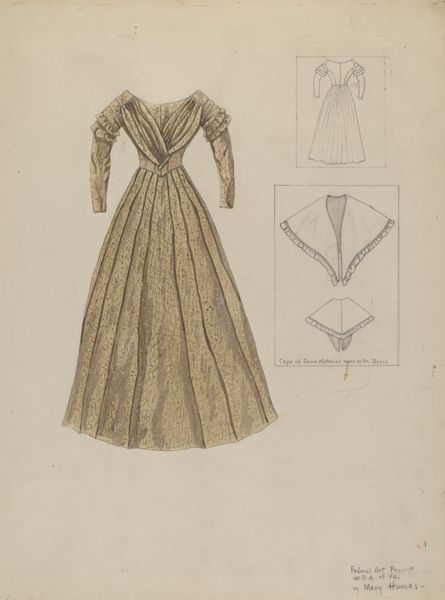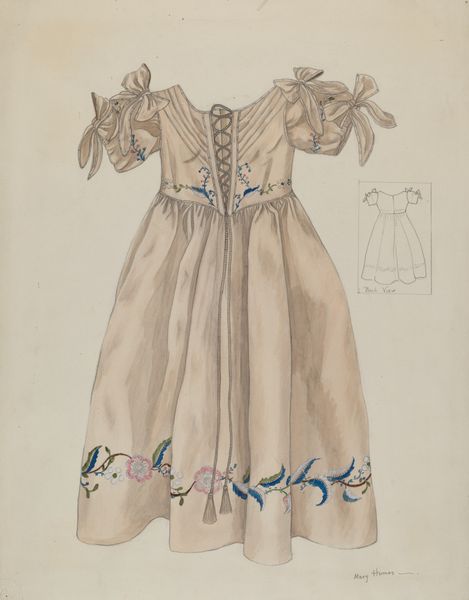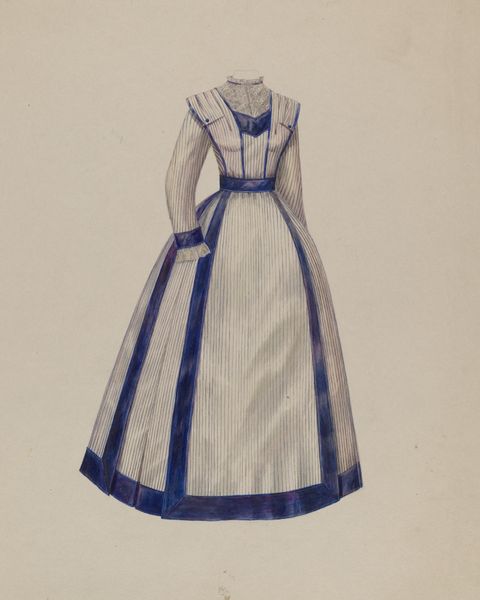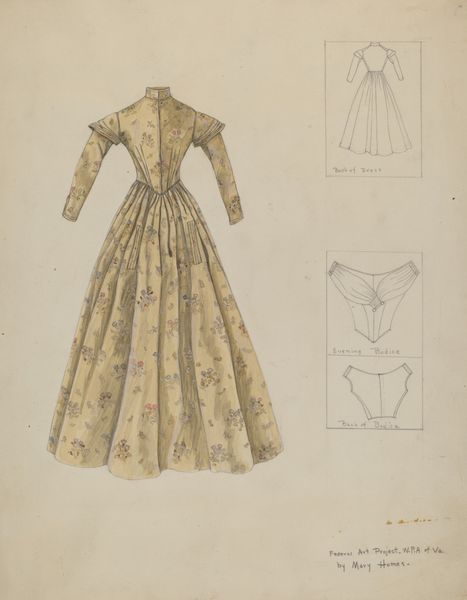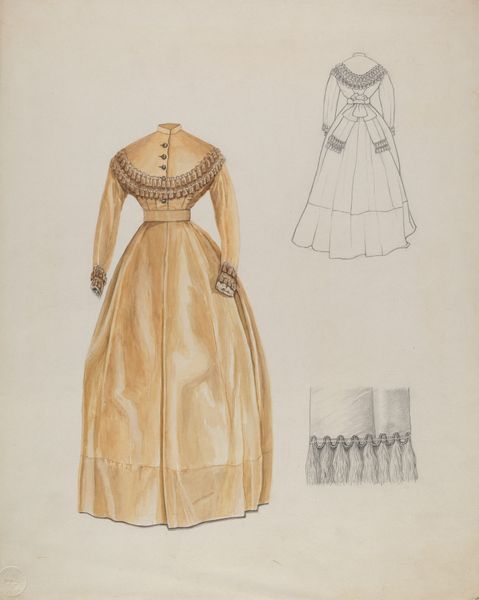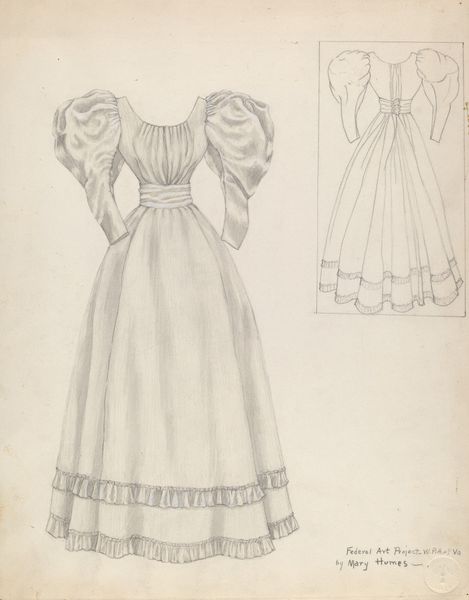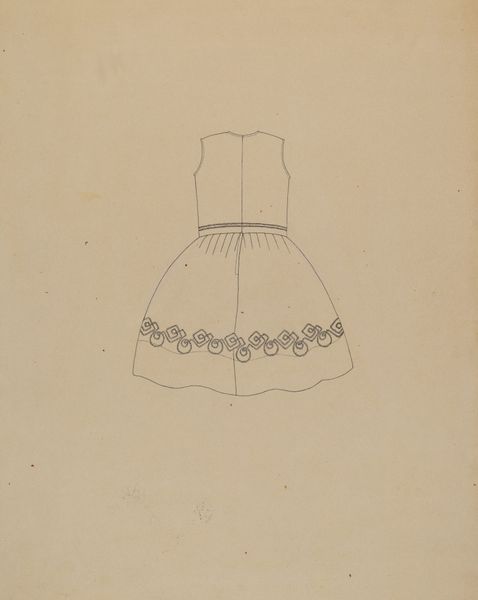
drawing
#
fashion design
#
drawing
#
underwear fashion design
#
light pencil work
#
fashion mockup
#
collage layering style
#
fashion and textile design
#
fashion based
#
historical fashion
#
fashion sketch
#
clothing design
Dimensions: overall: 35.8 x 28.1 cm (14 1/8 x 11 1/16 in.)
Copyright: National Gallery of Art: CC0 1.0
Curator: The image before us is titled "Costume" by Mary E. Humes, dating from around 1937. It appears to be a fashion design, rendered in what looks like pencil and possibly watercolor. Editor: It has a serene quality. The blues and whites, combined with those light pencil strokes, give a sense of quiet elegance, even in what is ostensibly a functional design sketch. The use of delicate strokes reminds me of silk threads. Curator: Yes, it is about a possible textile, yet it is the interplay between line and wash, and the balanced composition, that is most important. The artist presents a central view of a full-length evening gown and provides alternate back and upper view options as structural diagrams. Humes is not simply concerned with capturing an accurate likeness, but rather, about exploring design potential. Editor: And the artist is quite strategic in highlighting her materials and tools as well as making labor practices visible. Humes isn't just conjuring an image of high fashion, but displaying the very hands that create and shape it. Her pencil outlines aren't obscured. These materials carry their own kind of authority. It points us towards the whole industry supporting elite culture and consumption. Curator: But there's something more, isn't there? Consider the tension between the representation and the represented, where the signified always differs from the actual garment produced through this drawing. The gown is present by being absent from its own depiction, leaving Humes' creation suspended. Editor: I agree in part, but its presence is assured through Humes' process, that is a form of creation through planning, making the dress tangible through its rendering as idea. In many ways it feels similar to viewing early prototypes of our mass production of design work. Curator: I find myself moved by its timeless quality. The play of light across the sketched fabric folds continues to entrance, even generations later. Editor: Indeed. To consider the labor, materials, and processes required to produce such an object makes it valuable in itself.
Comments
No comments
Be the first to comment and join the conversation on the ultimate creative platform.
